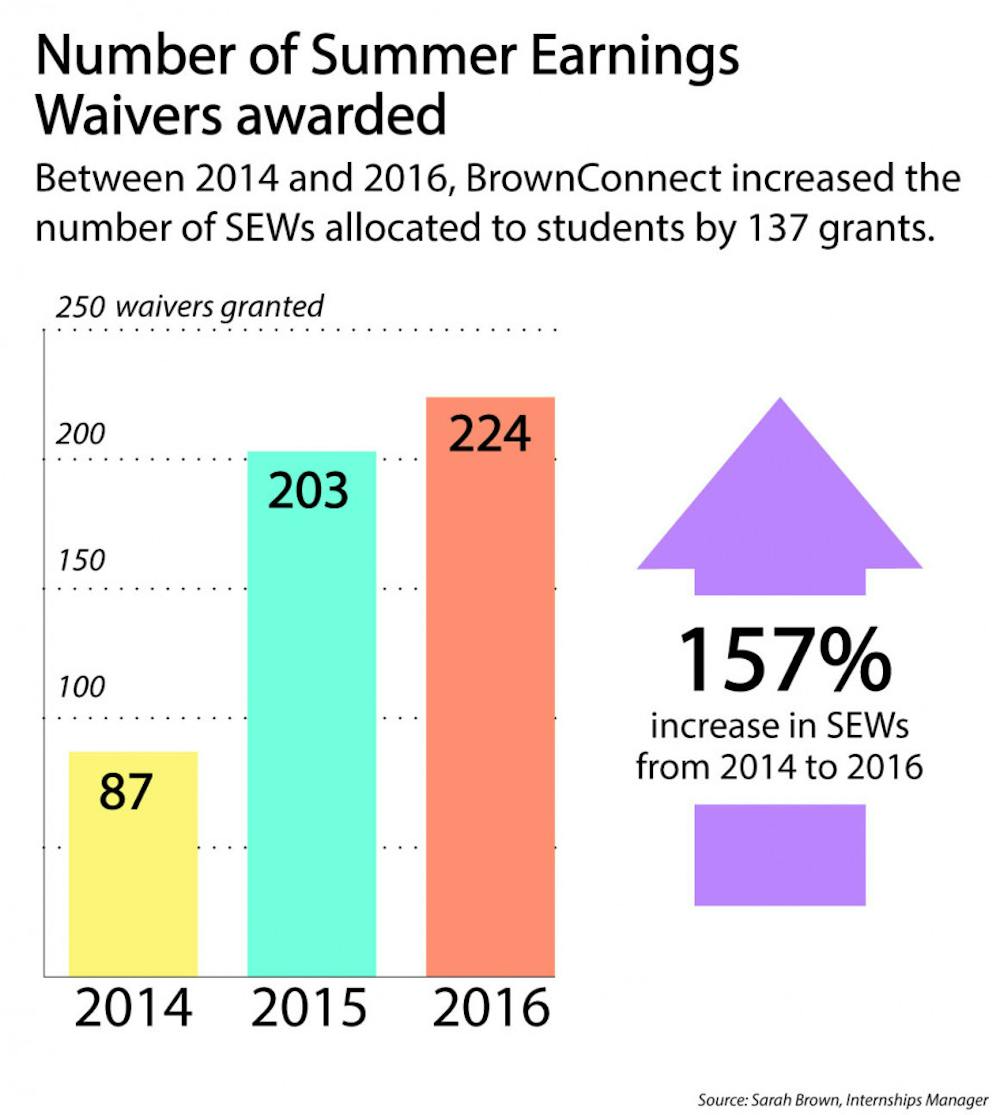The University’s Summer Earnings Expectation is a continuous topic of debate on campus. While the administration has tried to lessen the burden of the SEE through increased access to compensated summer programs, students still protest against its role in financial aid packages.
A student who receives need-based financial aid has an SEE as a part of their student contribution portion of their aid package to help pay for their education the following academic school year. The SEE is the same for every student, except for first-years, who have a slightly lower requirement. For the 2016-17 academic year, first-years were expected to contribute $2,650, while all other students receiving financial aid were expected to contribute $3,100.
The SEE is not unique to the University, as all eight schools in the Ivy League and other peer institutions across the nation require similar contributions from their students, said Jim Tilton, dean of financial aid.
“The basic philosophy of financial aid at Brown is a partnership between the University, families, students (and) the federal government,” Tilton said. “Students are expected to participate by bringing back” summer earnings to school each year, he added.
Kalvin Lam ’20 believes the SEE violates the concept of financial aid by asking students to pay what the aid package is supposed to provide. The requirement is “just unfair and makes no sense,” Lam said.
“Having a summer earnings portion in the financial aid package is pretty much just telling us to pay for it ourselves,” Lam added. To him, this is the equivalent of the University saying “Here’s how much we’ll be giving you for the year, except a portion of how much we’ll be giving you is what you earn,” he said. “It’s a contradiction in and of itself.”
In an effort to make the SEE more manageable, students can apply for a variety of awards and programs — the Undergraduate Teaching and Research Award, the BrownConnect LINK Award Program, the Bruno Signature Program and more — which not only provide compensation, but also waive the SEE with a Summer Earnings Waiver, said Matthew Donato, director of CareerLAB. “We’re pretty committed to the idea that students should receive compensation for significant internship work that they’re doing over the summer,” Donato added.
The numbers reflect that dedication. In 2016, 224 students received a SEW award, compared to 87 students in 2014, wrote Sarah Brown, CareerLAB internships manager, in an email to The Herald.
But students can only earn one SEW during their undergraduate studies through these programs unless an individual academic department and CareerLAB work to sponsor additional summer research opportunities, Donato said. Last summer, CareerLAB expanded its SEW offerings, giving additional SEWs to six other academic departments, he added.
Beyond CareerLAB, students can use outside scholarships to cover their SEE, which is not typical for institutions outside the Ivy League, according to Tilton.
But the SEE still generates some student criticism.
Some students take issue with how the SEE is implemented. Camille di Bella ’19 believes the SEE is particularly unfair for humanities concentrators.
“I know that for a lot of people here on financial aid studying humanities, the decision of what to do over the summer often comes down to taking a job (unrelated to humanities) or taking an unpaid internship … since internships in the humanities are generally unpaid,” di Bella wrote in an email to The Herald.
As a humanities concentrator, di Bella was forced to work to fulfill her SEE on top of her unpaid internship doing legislative work at a nonprofit, she wrote.
“I ended up spending my summer interning at the office during the day and then turning around almost as soon as I got home to work at my ‘real’ job during evenings and weekends,” wrote di Bella.
Those who live in states with a lower minimum wage are similarly disadvantaged, said Edith Mares ’20. She lives in Georgia, where the minimum wage in 2016 was $5.15 — one of the lowest wages in the United States. To fulfill her SEE at home, Mares must work more hours.
Furthermore, Mares feels that her SEE forces her to choose between spending time with her family or paying the requirement. “I would have to work about 14 weeks (to pay the SEE), which is basically the whole summer,” Mares said. “I will not sacrifice time with family I never get to see for the summer earning expectations.”
In the face of these student criticisms, the administration will continue to work toward solutions, Tilton said. “It’s a topic that comes up regularly.”





